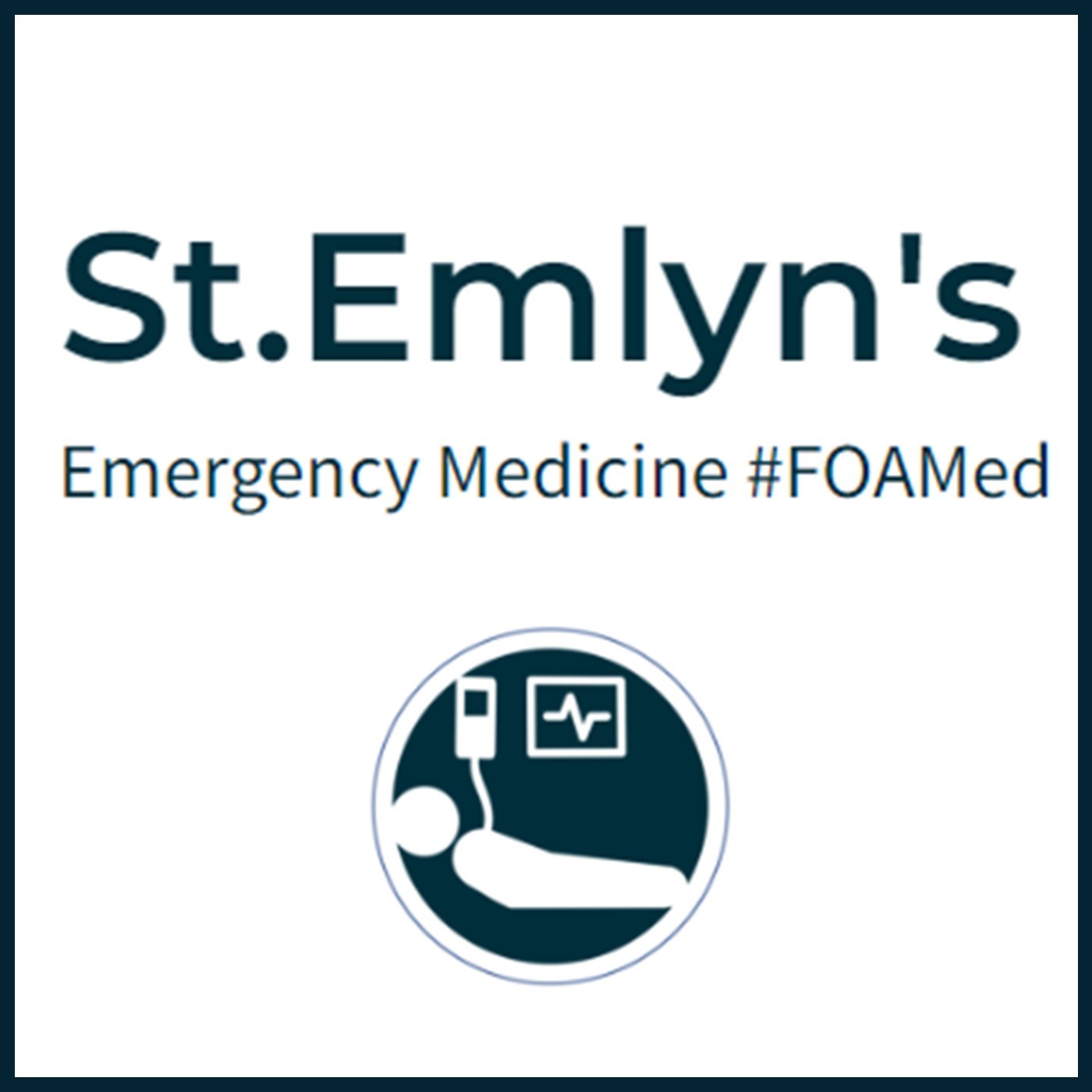
1.3M
Downloads
270
Episodes
A UK based Emergency Medicine podcast for anyone who works in emergency care. The St Emlyn ’s team are all passionate educators and clinicians who strive to bring you the best evidence based education. Our four pillars of learning are evidence-based medicine, clinical excellence, personal development and the philosophical overview of emergency care. We have a strong academic faculty and reputation for high quality education presented through multimedia platforms and articles. St Emlyn’s is a name given to a fictionalised emergency care system. This online clinical space is designed to allow clinical care to be discussed without compromising the safety or confidentiality of patients or clinicians.
Episodes

Sunday Sep 27, 2015
Ep 56 - Intro to EM: How to refer a patient
Sunday Sep 27, 2015
Sunday Sep 27, 2015
Mastering the Art of Clinical Referrals: A Guide for Emergency Physicians
Introduction
Effective communication is crucial in the emergency department (ED), particularly when referring patients to inpatient teams. It not only ensures optimal patient care but also enhances professional relationships and personal job satisfaction. In this post, inspired by the St. Emlyns podcast, we'll explore a practical framework for making clinical referrals, emphasizing the importance of clear, structured communication. We'll discuss the SBAR (Situation, Background, Assessment, Recommendation) format, the concept of the "James Bond opening," and strategies for handling difficult conversations, all tailored to the fast-paced environment of emergency medicine.
Why Effective Referrals Matter
Referrals are an integral part of patient management in the ED. Every referral is made with the patient's best interest in mind, whether they need further investigations, specialized treatment, or simply continuity of care. Ensuring that the receiving team understands the urgency and context of the referral is vital. Good communication can influence how the inpatient team perceives the referring physician and can enhance collaborative relationships, leading to better patient outcomes and professional fulfillment.
Setting the Stage: The James Bond Opening
When initiating a referral, it’s essential to grab the attention of the receiving team quickly and effectively. This is where the "James Bond opening" comes in—start with a high-impact statement that summarizes the critical aspect of the patient's condition. For example, instead of saying, "I have a patient with abdominal pain," begin with, "I have a 25-year-old male who likely has appendicitis." This approach not only captures attention but also sets the stage for a focused and efficient conversation.
The SBAR Framework: Structuring Your Referral
The SBAR model provides a structured approach to communication, ensuring all essential information is conveyed succinctly. Here’s how to implement it:
Situation
Begin with a brief description of the patient's current condition. This is where the "James Bond opening" fits perfectly. Clearly state the key clinical concern that necessitates the referral.
Background
Provide context for the situation. This includes relevant medical history, the reason for the current ED visit, and any pertinent findings. For instance, you might say, "The patient has had two days of right iliac fossa pain and a history suggestive of appendicitis."
Assessment
Share your clinical judgment about the patient's condition. This not only demonstrates your understanding but also signals the expected pathway of care. In our example, "Based on the examination and symptoms, I believe the patient has appendicitis."
Recommendation
Conclude with a clear, direct request. Specify what you need from the inpatient team, such as a physical assessment, further diagnostic testing, or specific interventions. For instance, "I'd appreciate it if the surgical team could evaluate the patient for potential appendicitis and consider admission for further management."
Enhancing the Referral Process: Tips and Tricks
Introduce Yourself Clearly
Always start the conversation by introducing yourself with your name and role. For example, "Hi, I'm Ian, one of the ED doctors." This personal touch helps build rapport and sets a friendly tone. If the receiving team introduces themselves by title only, politely ask for their name, fostering a more personable interaction.
Predict and Prepare for Questions
Anticipate the questions the receiving team might ask and prepare your responses. For example, if referring a potential appendicitis case, be ready to discuss symptoms, lab results, and physical findings. This not only streamlines the conversation but also demonstrates your preparedness and competence.
Use the Illusion of Choice
To smooth the referral process, offer options that guide the receiving team towards a decision that benefits the patient. For instance, "Would you prefer to see the patient in the ED or on the ward?" This technique, known as the illusion of choice, empowers the receiver while subtly directing the conversation towards the desired outcome.
Navigating Difficult Conversations
Not all referral conversations go smoothly. Sometimes, the receiving team may be uncooperative or dismissive. Here are strategies to handle such situations:
Stay Calm and Professional
If the conversation becomes contentious, avoid escalating the situation. Remain calm and professional, focusing on patient care rather than engaging in arguments. A useful tactic is to suggest pausing the conversation: "Let me discuss this further with my senior and get back to you."
Seek Support from Senior Staff
If you encounter resistance, consult a senior colleague or consultant. They can provide additional insights or take over the conversation, ensuring the patient receives the necessary care.
Empathize with the Receiving Team
Understand that the receiving team might be under significant pressure, dealing with their own caseloads and challenges. Acknowledging their situation can defuse tension and facilitate a more constructive dialogue.
Conclusion: Practice Makes Perfect
Effective referrals are a skill that, like any other medical procedure, requires practice and reflection. Using the SBAR framework, starting with a strong "James Bond opening," and preparing for potential questions can significantly improve the quality of your referrals. Remember, every interaction is an opportunity to enhance patient care and build professional relationships.
For more insights and discussions on emergency medicine, communication skills, and more, visit the St. Emlyns blog and podcast series. Let's continue to improve our skills and ensure the best outcomes for our patients.

Saturday Sep 05, 2015
Ep 55 - Communicating (not Breaking) Bad News with Liz Crowe
Saturday Sep 05, 2015
Saturday Sep 05, 2015
Communicating Difficult News in Emergency Medicine: A Guide from St Emlyns
Introduction
Effective communication of difficult news is a critical skill in emergency medicine. This guide, based on a discussion between Iain Beardsell and Liz Crowe, explores best practices for delivering challenging information to patients and their families, emphasizing compassion and clarity.
The Importance of Language
The terminology used when delivering bad news can significantly impact the recipient's perception. Liz Crowe suggests avoiding phrases like "delivering bad news" or "breaking bad news," as they imply a one-time transaction. Instead, "communicating difficult news" emphasizes an ongoing process that includes listening, support, and engagement. This language shift helps set a compassionate tone and encourages continuous dialogue, reassuring families that they are not alone.
Building a Supportive Relationship
The goal of communicating difficult news is not just to convey information but to build a supportive relationship. Unlike a delivery person who leaves after a transaction, healthcare professionals should remain engaged, ensuring that families feel heard and supported. This involves being present, offering a listening ear, and providing continuous support, which helps families process the news and feel significant during a difficult time.
Self-Awareness in Communication
Healthcare professionals must be self-aware of their emotions and biases when delivering difficult news. Liz points out that under stress, professionals might default to using medical jargon, which can distance them from the family. Recognizing one's emotional triggers and managing them is crucial for maintaining a compassionate demeanor. Self-awareness also involves understanding personal limitations and seeking support when needed, ensuring that caregivers can provide the best possible support to families.
Creating the Right Environment
The environment where the news is delivered plays a crucial role. A private, quiet space where everyone can sit comfortably helps create a sense of safety and respect. Healthcare professionals should take a moment to prepare mentally before the conversation, organizing their thoughts and emotions. This preparation helps in delivering the news clearly and calmly, reducing the chances of miscommunication.
Nonverbal Communication and Setting the Tone
Nonverbal cues, such as facial expressions and body language, significantly influence the tone of the conversation. Professionals should approach with a serious and empathetic demeanor, setting the expectation for a difficult conversation. A somber expression can help prepare families for the news, as opposed to a smile, which might create false hope. The first and last things said are particularly memorable, so they should be chosen carefully to ensure clarity and compassion.
Clarity and Honesty
Clarity is paramount when delivering difficult news. If a patient has died, it is essential to state this clearly and directly, avoiding euphemisms and medical jargon. Information should be given in small, digestible pieces, allowing families to process it. Professionals should also be prepared to repeat or clarify information, as initial shock can make it difficult for families to absorb all details.
Handling Emotional Reactions
Emotional reactions are natural and expected. Liz advises against immediately offering tissues, as this can imply discomfort with the family's grief. Instead, give them space to express their emotions. Healthcare professionals should be prepared for a range of responses, from tears to anger, and maintain a supportive presence throughout. Validating the family's emotions is crucial, as is allowing them time to grieve.
Continuous Engagement and Follow-Up
The conversation should not end after delivering the news. Continuous engagement is vital, including checking in with the family periodically and being available for follow-up questions. This ongoing support helps families feel cared for and reassures them that they are not left to navigate the situation alone. Follow-ups can include arranging further meetings, providing written materials, or referring to counseling services.
Special Considerations for Children
When children are involved, the information should be age-appropriate and delivered with care. Liz suggests involving children in the conversation, as excluding them can lead to confusion and mistrust. It is essential to use simple, clear language and to be honest about the situation. Reassuring children that it is okay to feel sad or confused helps them process their emotions.
Respecting Cultural and Religious Beliefs
Cultural and religious beliefs can significantly influence how families perceive and process difficult news. Healthcare professionals should respect these beliefs and tailor their communication accordingly. This might involve understanding specific rituals or customs and involving spiritual advisors when appropriate. Respecting these practices provides comfort and shows respect for the family's values.
Conclusion
Communicating difficult news is a challenging but essential aspect of emergency medicine. It requires empathy, clarity, and a commitment to ongoing support. By focusing on these elements, healthcare professionals can help families feel supported and understood during some of the most challenging moments of their lives. The insights shared by Liz Crowe and Iain Beardsell emphasize the importance of a compassionate and structured approach, ensuring that these conversations are handled with the utmost care and respect.
For more insights on navigating complex topics in healthcare, stay tuned to the St Emlyns blog. We are committed to providing valuable information to support healthcare professionals in their journey of delivering compassionate and effective care.
